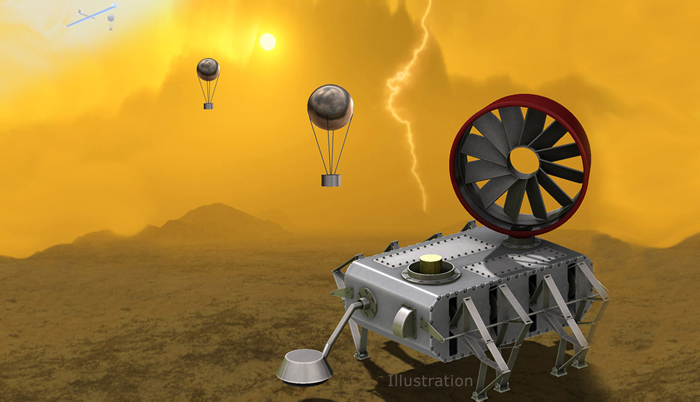![]() Home > Internet & Media
Home > Internet & Media
NASA Goes Steampunk For Its Future Venus Probes

AdChoices
![]() August 30th, 2017 | 09:29 AM |
August 30th, 2017 | 09:29 AM | ![]() 1018 views
1018 views
ENGADGET
The rover uses wind and a mechanical computer to thrive in extreme conditions.
NASA knows better than any of us that what seems normal today was once science fiction. So, it isn't afraid to bet some cash on some fanciful space projects via the NASA Innovative Advanced Concepts (NIAC) symposium. This year, the agency looked at projects it calls "little more than ideas," including a Venus probe inspired by famed Dutch artist Theo Jansen, the creator of wind-powered "Strandbeests."
"The NIAC program is designed to let technologists stretch and create concepts that have never been considered by NASA before," said NIAC program executive Jason Derleth, adding that ideas can come from universities, businesses or garage inventors. Still, proposals must be based on "solid scientific and engineer principals and to advance NASA's mission objectives," he adds. An example of that is Adrian Stoica's folding mirror probe, that would create a "solar oasis" on the moon, approved for fuding at a prior NIAC symposium.
The most interesting project is AREE (Automaton Rover for Extreme Environments), a Venus probe. Since our unfriendly neighbor of a planet can hit 842 degree F temperatures and 90 times Earth's atmospheric pressure, most electronics would be dead on arrival.
AREE would actually use Venus' conditions to its advantage by taking power from the wind and tapping a mechanical computer. A radar reflecting piston would move up and down to transmit surface "data" as morse code, which could be picked up by "repeater" balloons and transmitted to Earth from an orbiter.
The team based the design on Theo Jansen's Strandbeests, whimsical automatons that patrol beaches powered by wind and canny mechanical design (below). But after they brought Jansen himself aboard, he recommended dropping the early mechanical leg design, as it wouldn't work if the probe tipped over. "The beaches of the Netherlands are nice and smooth, but the surface of Venus is rough and harsh," lead project engineer Jonathan Sauder told Fast Co. The team is now exploring a tank-like probe, with a central wind turbine (above), that could handle rough conditions.
Another drone called the Ice-moon Cryovolcano Explorer (ICE) would face the opposite conditions on Europa, Saturn's fascinating moon. After landing on the surface, the probe would deploy a so-called descent module that could "rappel" down a cryovolcano vent. Eventually, it would arrive below the surface of the planet, which scientists figure could be liquid saltwater warmed by so-called tidal flexing. From there, it could swim around and explore the environment, searching for life.
Other projects include a glider that would explore asteroids by floating on electrostatically charged dust and a weather balloon powered by chemical batteries from Venus' caustic atmosphere. Crazy? It seems that way now, but it's the so-called crazy thinkers that dream up our future lives. The best projects get $100,000 for entering Phase I, and up to $500,000 if they advance to Phase II research.
Source:
courtesy of ENGADGET
by Steve Dent, @stevetdent
If you have any stories or news that you would like to share with the global online community, please feel free to share it with us by contacting us directly at [email protected]